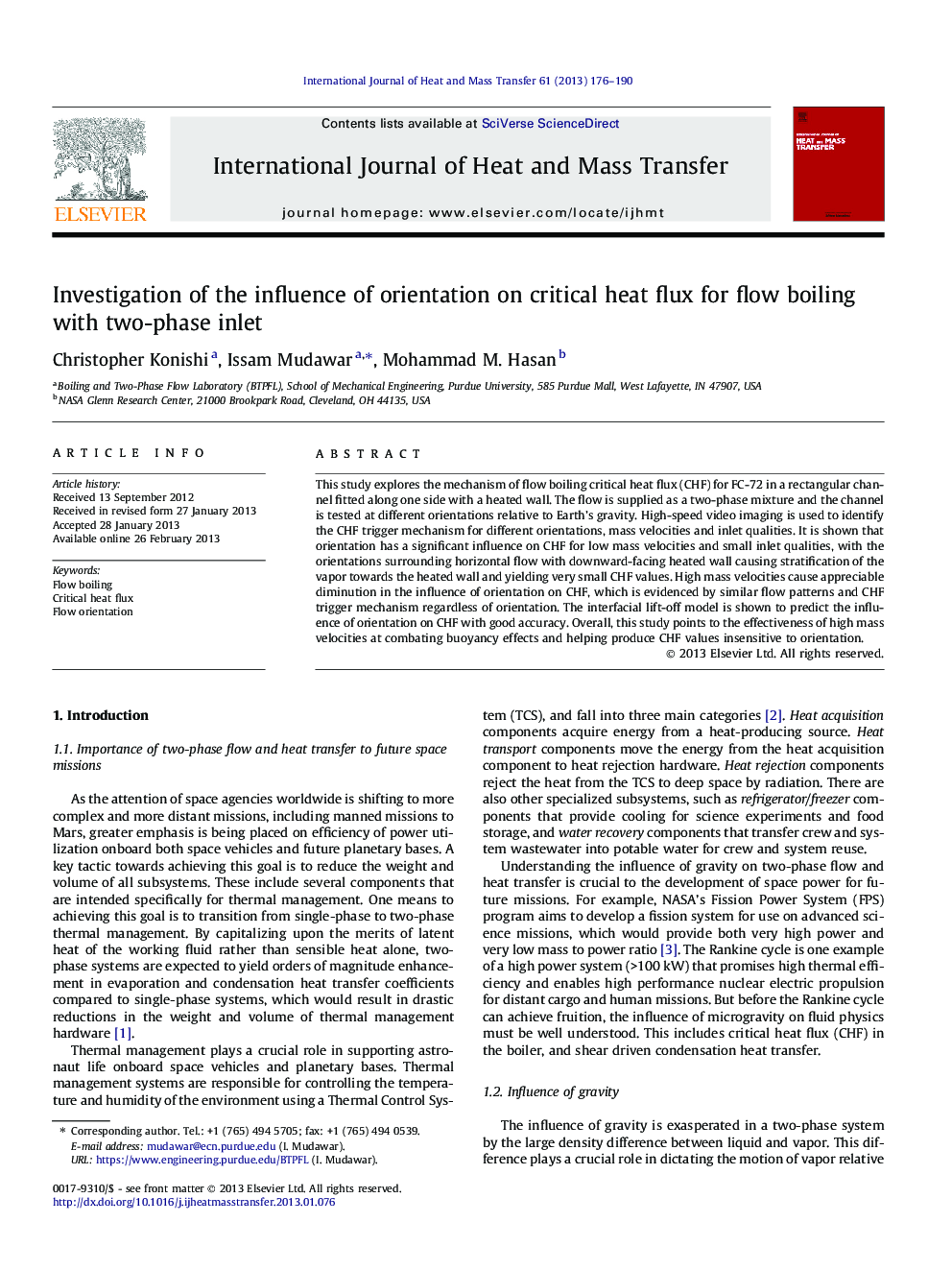| Article ID | Journal | Published Year | Pages | File Type |
|---|---|---|---|---|
| 7058909 | International Journal of Heat and Mass Transfer | 2013 | 15 Pages |
Abstract
This study explores the mechanism of flow boiling critical heat flux (CHF) for FC-72 in a rectangular channel fitted along one side with a heated wall. The flow is supplied as a two-phase mixture and the channel is tested at different orientations relative to Earth's gravity. High-speed video imaging is used to identify the CHF trigger mechanism for different orientations, mass velocities and inlet qualities. It is shown that orientation has a significant influence on CHF for low mass velocities and small inlet qualities, with the orientations surrounding horizontal flow with downward-facing heated wall causing stratification of the vapor towards the heated wall and yielding very small CHF values. High mass velocities cause appreciable diminution in the influence of orientation on CHF, which is evidenced by similar flow patterns and CHF trigger mechanism regardless of orientation. The interfacial lift-off model is shown to predict the influence of orientation on CHF with good accuracy. Overall, this study points to the effectiveness of high mass velocities at combating buoyancy effects and helping produce CHF values insensitive to orientation.
Related Topics
Physical Sciences and Engineering
Chemical Engineering
Fluid Flow and Transfer Processes
Authors
Christopher Konishi, Issam Mudawar, Mohammad M. Hasan,
